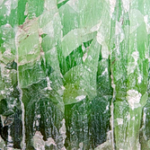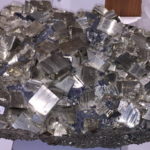 More than 80% of the gemstones currently being traded in the market are either enhanced or treated in one form or another. To understand the difference between untreated and treated gemstones, we will first need to understand the implications between the two.
More than 80% of the gemstones currently being traded in the market are either enhanced or treated in one form or another. To understand the difference between untreated and treated gemstones, we will first need to understand the implications between the two.
Untreated gemstones are those that are not altered or enhanced in any way. They remain in the same form as when they were extracted from the earth. These gemstones remain in their original form and only get polished and cut to be used as jewelry accessories.
Types of Treatment
Listed below are just some examples of the various treatments a gemstone is made to undergo.
Heating
The stone is exposed to high temperatures to enhance its clarity and alter the color. The most common gemstones that undergo this treatment are Zircon, Topaz, Sapphire, Ruby, Tanzanite, Aquamarine, and some others. Heating is a practice that is widely accepted in the gem market.
Oiling
Rubies and emerald are one of the most commonly oiled gemstones. Other gemstones that undergo oiling are Demantoid Garnet and Alexandrite. Oiling makes the surface more smooth and reduces any visible incisions.
Irradiation
Stones are exposed to varying degrees of controlled radiation to alter their color. Diamond, topaz, pearl, and quartz are common examples of gemstones that undergo radiation.
Dyeing
The fractures of a precious stone are exposed to colored dyes. To check whether a stone is dyed or not, you can perform a simple test at home using acetone. Pearl, Lapis Lazuli, Jade, and Quartz are some examples of commonly dyed gemstones.
Bleaching
A stone is bleached when it’s exposed to a certain chemical to change i.e. reduce or slightly alter the color of a precious gem. Tiger’s Eyes, Pearl, and Jade are some examples of stones that are bleached to reduce their color.
 Why Gemstones are Treated
Why Gemstones are Treated
- Treated gemstones are cheaper. This is one of the biggest advantages of a treated gemstone. Most people want to buy or wear an emerald but since an emerald costs $50K per carat (untreated), most people cannot afford it. The solution is a treated emerald that starts at $10 per carat and can go up to $10K per carat.
- Treated gemstones are more available than natural gemstones. Untreated gemstones, especially of a larger size, are a very rare find. For example, an untreated diamond that is above 5 carats would cost millions of dollars and extremely hard to find as no one would be willing to sell that on the open market. Treated diamonds are available everywhere in most sizes.
- Rapid changes in fashion and general trends. A new outfit calls for a new piece of jewelry to go with it.
Advantages of an Untreated Gemstone
- Treated gemstones are less durable. The heat treatment, which is a widely accepted and practiced process, leaves the surface of the stone more brittle. After a certain amount of time, the straightened edges of the stone become chipped and fall in value.
- Irradiated gemstones might be harmful to some. Irradiated stones are exposed to radioactive materials such as beryllium which is harmful to health.
- Treated gemstones do not have a rigid price. New ways of treatment are being introduced to the market every day. As new methods come out, gemstones treated using old methods fall in value quite drastically. One of the best examples is the case of the Yellow Sapphire, whose price crashed in the 90s when newly treated gemstones were introduced which had superior qualities.
- Treated gemstones are unnatural. Mother Nature has a fixed supply of gemstones in her crust. This limited supply is what contributes to the high prices that natural gems can fetch. The market is flooded with treated gems; hence, they are valued as such.
The Global Market
Now that most of the world has been mapped and explored precious minerals, gem dealers and gemologists alike have a grasp on what stones to classify as rare.
Although new mines are discovered, the overall supply remains unaffected. This was not always the case as diamonds were extremely rare a few centuries ago, and could only be afforded by royalty and the very wealthy individuals.
When the large deposits in Africa were discovered to be overflowing with diamonds, the major companies dealing in these stones knew it spelled doom. They realized that if these stones were sold in unrestrained quantities in the open market, the price would plunge. At the time, diamonds were still not common in the open market and a cartel was formed to restrict the flow of diamonds. The flow is still controlled by the same cartel to this day.
In contrast to diamonds, other precious stones in their natural state are extremely uncommon. The natural stones keep getting more expensive with the passage of time as more people realize their true worth.
Final Thoughts
Whether they shine, luster or sparkle, gemstones have been held in high regards ever since they were first discovered. When the first gemstones were discovered there were no treatments available and hence natural stones had no substitute.
Natural stones have a value that goes far beyond what the eye can see. If, however, appearance is your only concern, then you might opt for a cheaper treated stone. Keep in mind that synthetic jewelry and treated stones will never have the same allure and uniqueness that is found in real gemstones.

 Why Gemstones are Treated
Why Gemstones are Treated